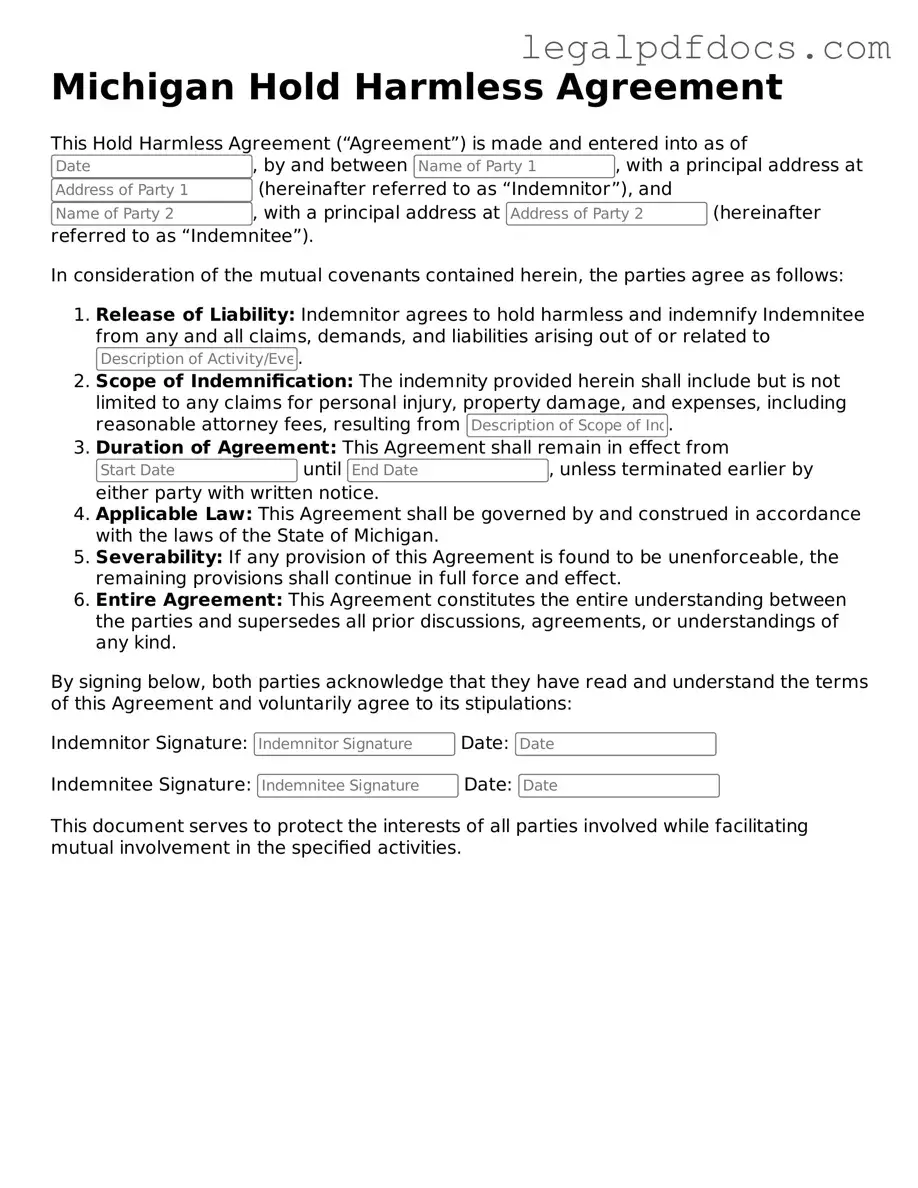Official Hold Harmless Agreement Form for Michigan
A Michigan Hold Harmless Agreement is a legal document designed to protect one party from liability or claims that may arise from the actions of another party. This agreement is often used in various situations, such as rental agreements or events, where one party wishes to ensure they are not held responsible for potential damages or injuries. Understanding this form is essential for anyone looking to navigate agreements safely and confidently.
To get started on your own Hold Harmless Agreement, please fill out the form by clicking the button below.
Open Hold Harmless Agreement Editor Here
